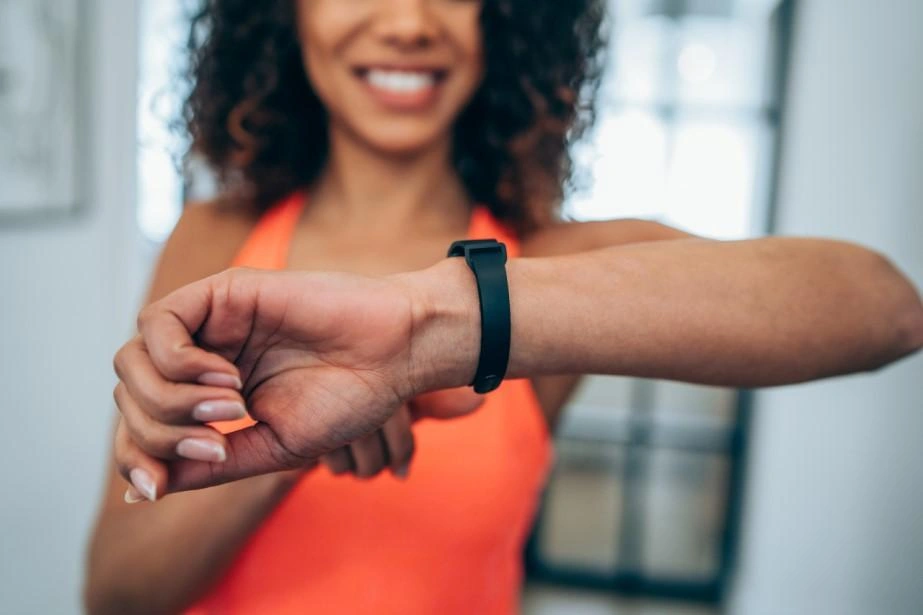Why is fitness tracker data so important? This ocean of data available from our movement has potential way beyond just telling us our heart rate or footstep count – it can also improve the effectiveness of our fitness workouts.
The Covid-19 pandemic affected every market and company, and one of the industries that has felt the impact of government-mandated changes the most is the fitness industry—an industry that relied on on-site contact and engagement in the past. Gyms used to operate predominantly on-site. But the nature of the pandemic has flipped that model on its head and forced gyms to pivot to digital and virtual fitness options, adopting an omni-channel business model to not only keep their customers fit and well, but also to help motivate them to achieve their lifestyle goals. Fitness trackers are now a key part of this story, one of the greatest tools in a personal trainer’s arsenal is the health apps held on their customer’s phones.
If you always have a smart device on you, there’s a good chance it tracks your every move – but not in the way you may think. Instead, with the help of motion sensors and geo-location services, your smartphone can easily tell you how many steps you take in a day, how many calories your body has burned to move around, and even what your heart rate, respiratory rate, or sleep cycle looks like.
Information that used to require a visit to a physician is now commonly available through smart phones, fitness trackers, and all sorts of other personal handheld devices. This data isn’t just available with the tap of the screen, but it’s also available in real-time, with no waiting or appointment-booking necessary. What this means for the average person is that, if they are comfortable sharing the data, wearable technology can help them track their fitness, as well as be used during their exercise plan to achieve better results faster while staying in control.

In the U.S. 38% of club members wear a fitness tracker during their workout
Your executive fitness assistant
Wearable tech—including smartphones, fitness trackers, and watches—will soon lead the way for health and fitness professionals to empower everyone to take more ownership of their personal health and fitness through unique challenges that use their own personal data to track progress.
According to research commissioned by Xplor1 many are already using this exclusive data to inform and improve their workouts; in the U.S. 38% of club members wear a fitness tracker during their workout, compared to 22% of non-members—whereas in the UK, the study found 24% of gym members were using one, compared to 16% of non-members.
Fitness tracking devices are getting more and more widespread; Data from Grandview Research suggests that global wearable technology is set to grow at an annual rate of 15.9% from 2020 until 2027. With growth comes new opportunities for fitness professionals, and with knowledge comes the empowerment for everyday people to make positive changes for their health.
With clients using wearable fitness devices, personal trainers can provide a new level of service with greater insights on their clients’ stats, including blood pressure, respiratory rate, and heart rate. All this useful information can easily be collected through the devices in real-time, with no extra effort on the part of the consumer. With all this available data, trainers can make more accurate judgments on what types of programs, at what intensity, and at what intervals, would benefit their clients most and help them achieve their wellbeing and health goals. The net result is a workout program that best reflects a person’s current health state, and those areas to address first.
The gamification of fitness data
Coaches and trainers are already superstars at amping up their clients. But now there’s another way trainers are building engagement with their clients, and it’s by creating games, challenges, and rewards for points accumulated through their fitness trackers. With a direct way to see a client’s fitness activity at any time of the day—and not just during one-on-one sessions—trainers can incentivize their clients with prizes and rewards for increasing their activity.
Most of us are familiar with office challenges to meet a certain number of footsteps over a period of time—but these challenges take it one step further. Health clubs, studios and personal trainers are also using gamification through leader boards, wearables, private online accountability groups, and loyalty/rewards programs designed to incentivize healthy habits.
It’s not just about rewarding intensity, but also creating good habits. The fitness and wellbeing industry is starting to think beyond a workout experience and do everything they can to keep customers engaged through the feeling they create with their brand. These businesses know if they can get their members to take three classes a week, they will feel good and they will keep coming back to get that feeling. If they can incorporate other holistic wellness activities like meditation, relaxation, sleep quality, and nutrition, then their customers will feel even better for longer. Plus, other factors such as risk for injury and certain illnesses, are reduced.

Payouts for push ups
New apps like SweatCoin and StepBet have taken the idea of fitness gamification one step further and started financially incentivizing users to workout. The amount depends on the app, the goals, and how much they move during the day to meet those goals. But the concept seems to be one to stay: if people are happy to share this data, everyone wins. The trainers and coaches they trust can see a fuller picture, and people receive a much more comprehensive fitness experience, truly customized to them. Other parties, such as health insurance providers, also benefit from their clientele working actively on improving their health by seeing fewer claims and lower premiums.
This model is also one of the most efficient ways gyms can earn loyalty from clients. Imagine earning points and dollars by attending your favourite health club or studio, or seeing your personal trainer, and then using this next door at a chiropractor or juice shop. Health clubs and studios and trainers have been rewarding customers for fitness through loyalty and rewards programs for years, and we’re seeing these rewards get even better through new partnerships that offer even more value-adds. This could open up collaboration opportunities between brick-and-mortar wellbeing businesses in neighbouring areas, or even further abroad.
New developments in wearable fit-tech could change the game for consumers and fitness professionals—with the insights available from heartbeats, breaths, and intrinsic movements we can better engage and excite people in their personal fitness regime. Harnessing this data isn’t just about adding more value to fitness workouts—it’s also about finding more exhilarating new fitness and wellbeing challenges, something we could all use a little bit more of after the pandemic.
About the research
Through Decision Architects, Xplor conducted an online study of consumer fitness preferences during February-March 2021 in the United Kingdom and United States. The sample for the study was defined as people who are members or regular attendees of gyms, health clubs, boutique fitness studios, leisure centres or sports clubs.

by Xplor Technologies
-
First published: October 14 2021
Written by: Xplor Technologies
